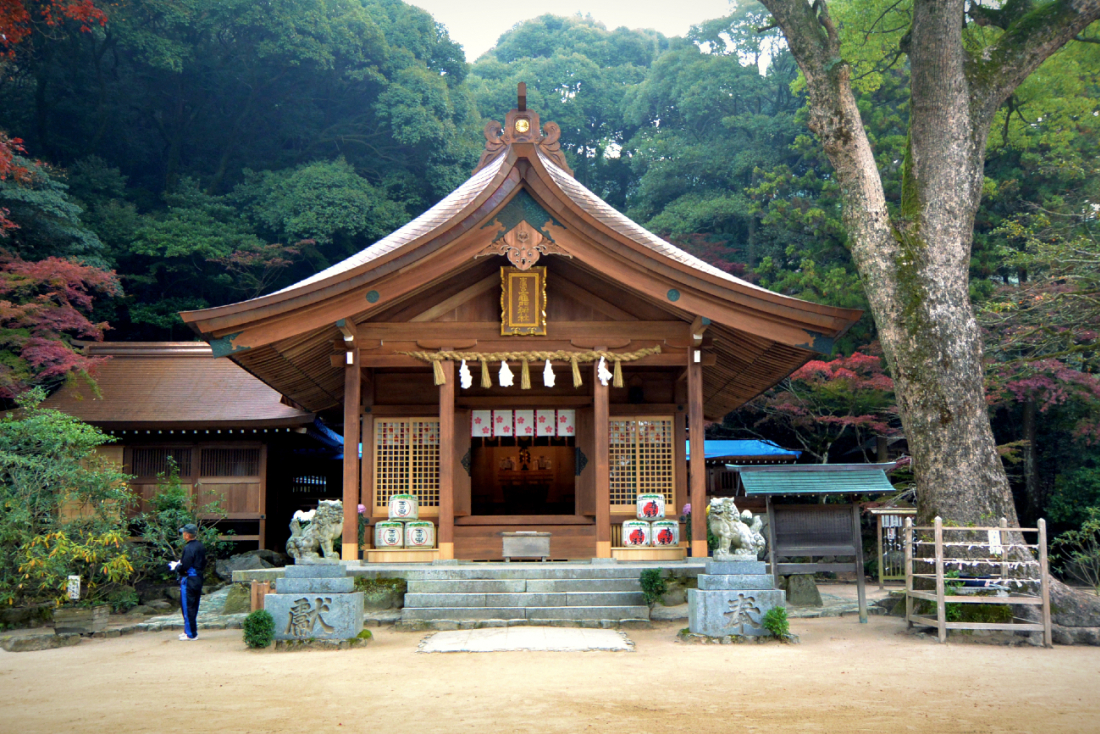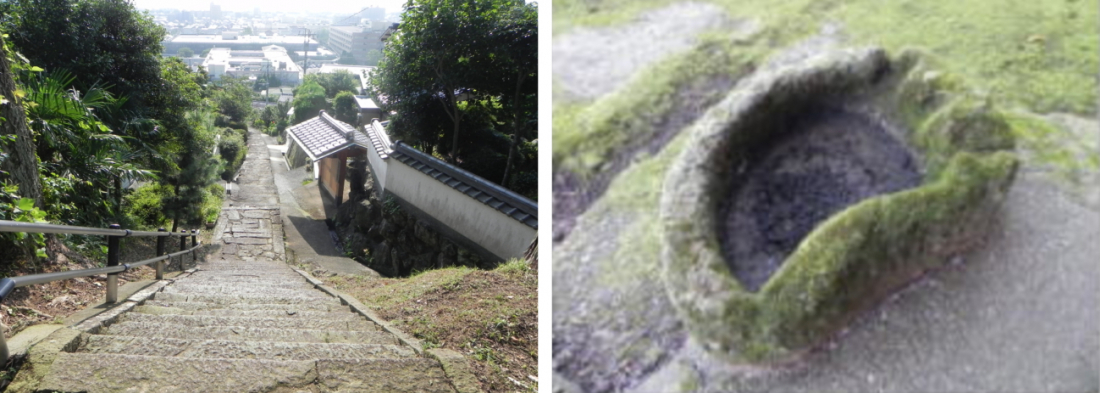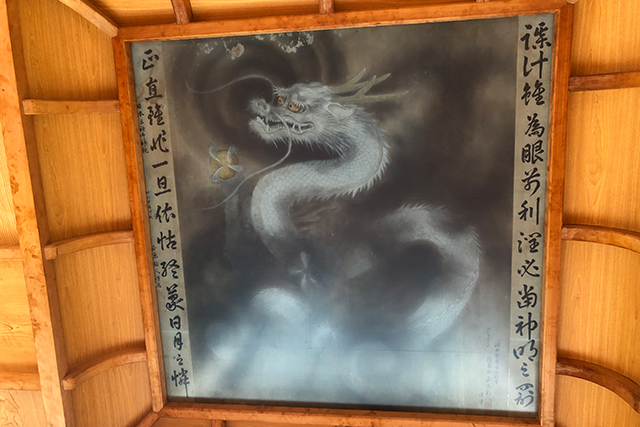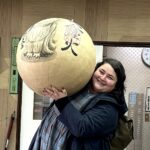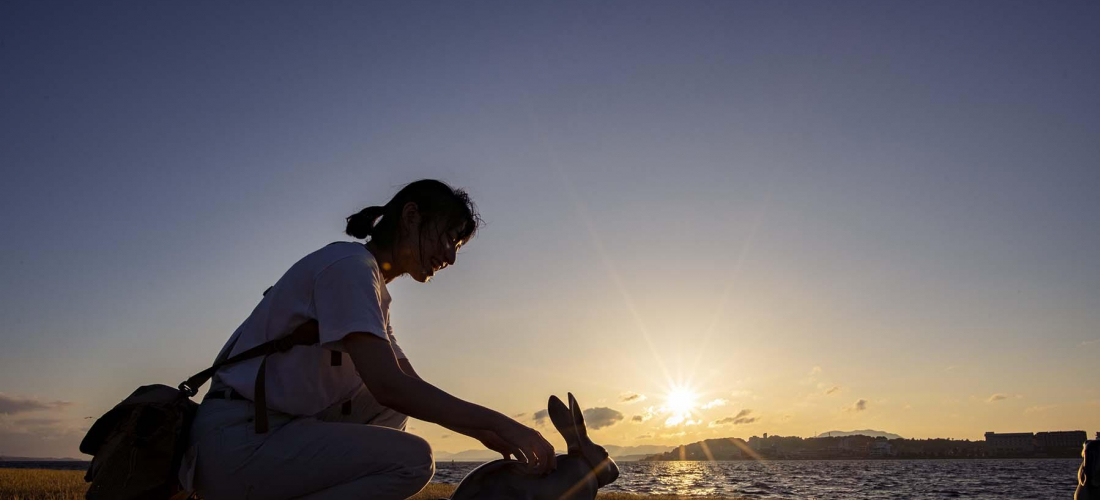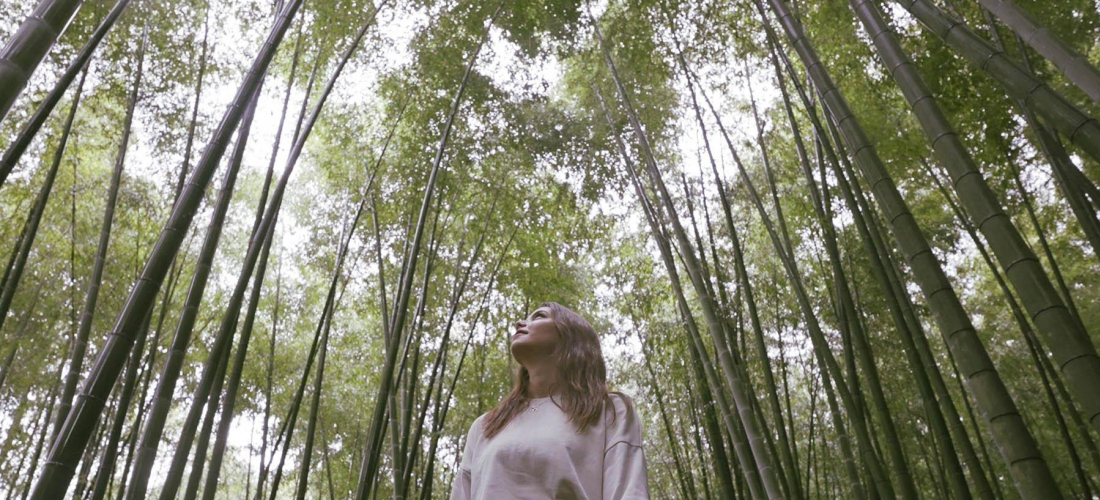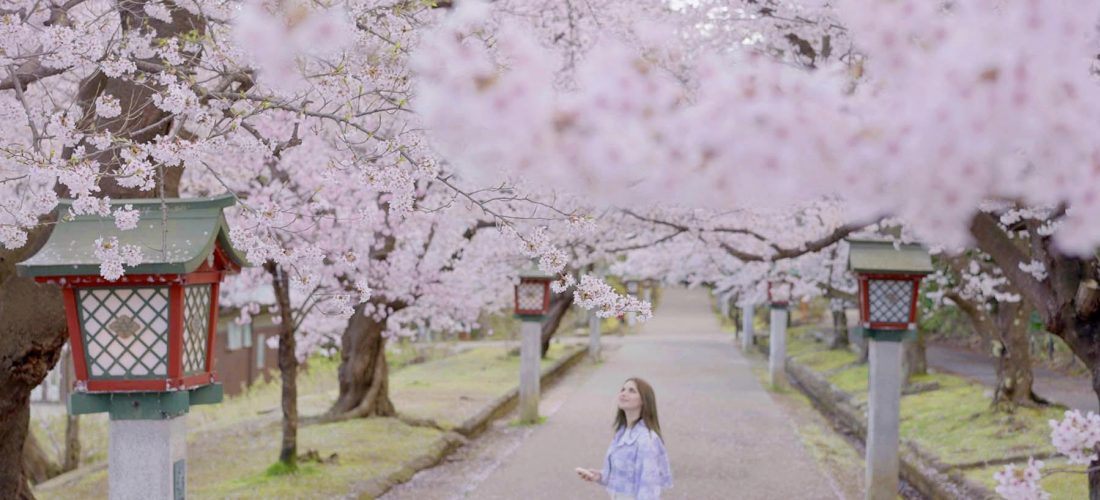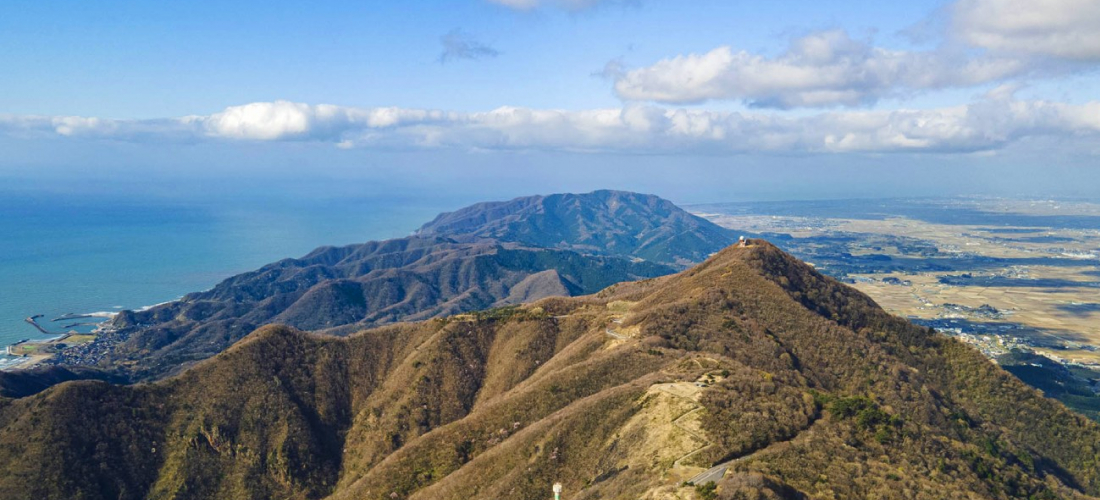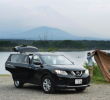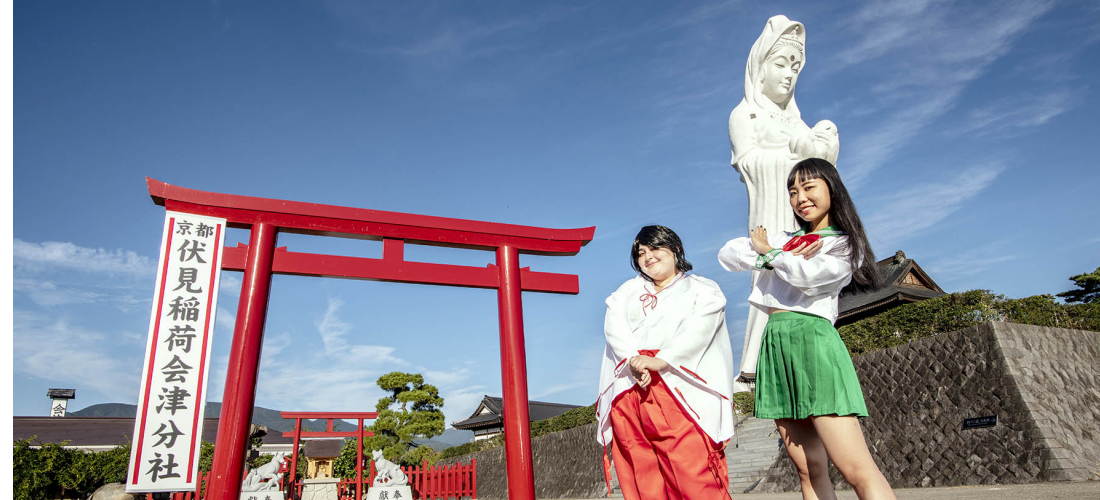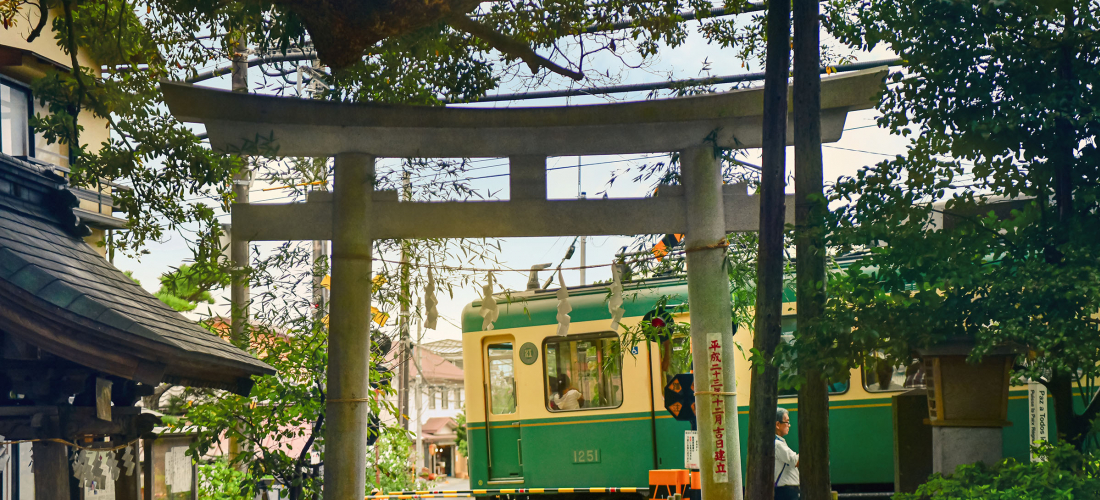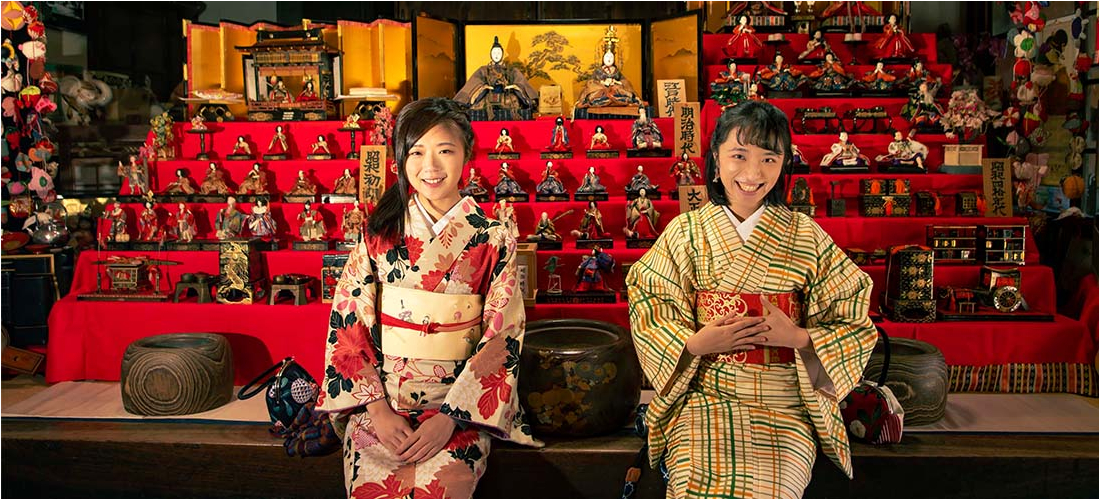CONTENTS
Si vous regardez Demon Slayer, le nom de «Kamado» vous semble probablement familier! Découvrez les sanctuaires du sud du Japon où les fans de Demon Slayer ne peuvent s’empêcher de se rassembler.
Le sanctuaire Kamada, à Fukuoka
Vous aimez Demon Slayer: Kimetsu no Yaiba (鬼 滅 の 刃) et souhaitez vous rendre au cœur de l'histoire lors de votre voyage au Japon? Les liens profonds de l'anime avec l'histoire japonaise et les légendes traditionnelles des démons oni (鬼), en font une information amusante lorsque vous préparez votre voyage avant d'explorer la culture japonaise. Mais si vous vous considérez comme un vrai fan, vous voudrez peut-être même laisser Demon Slayer vous guider jusqu'au sud de l'île japonaise de Kyushu! Car il s'avère que les sanctuaires Kamado fondés là-bas, il y a des centaines d'années, sont des endroits incontournables pour les fans de Demon Slayer!
Le sanctuaire Kamado (宝 満 宮 竈 門神 社) de Fukuoka existe depuis plus de 1350 ans, créé pour la première fois en 673. Pendant de nombreuses années, il a été un sanctuaire populaire pour les "enmusubi" (縁 結 び), et les gens venaient y prier pour bénéficier de bonnes relations avec les autres, et il accueille encore fréquemment des cérémonies de mariage shinto. Jusqu'à tout récemment, le sanctuaire était une destination quelque peu mineure, attirant de petites foules venant du sanctuaire bien plus populaire de Dazaifu Tenmangu (太宰府 天 満 宮).
Bien sûr, sa réputation a changé au cours des dernières années, grâce à la montée en popularité explosive de Demon Slayer: Kimetsu no Yaiba!
Comme beaucoup de lieux religieux au Japon, le sanctuaire Kamado propose des tablettes de veux ema (絵 馬) sur lesquelles les visiteurs peuvent écrire leurs souhaits et les accrocher dans le sanctuaire. Nous pouvons tous comprendre que les fans de Demon Slayer ne se contentent pas d'écrire leurs souhaits et de s'en aller, comme vous le voyez dans de nombreux sanctuaires. Il y a des œuvres d'art incroyablement impressionnantes dessinées sur les tablettes en bois, mettant en vedette tout le monde, de Nezuko et Tanjiro au puissant (et largement détesté?) Giyu Tomioka.
Certains des souhaits sont également spécifiques aux manga, les gens écrivant par exemple leurs espoirs que "les démons seront éradiqués" ou que le pauvre Zenitsu trouvera enfin l'amour.
Kamado Shrine, Fukuoka (宝満宮竈門神社)
883 Uchiyama, Dazaifu, Fukuoka
Official Website (jp)
Le sanctuaire Kamado à Oita
Il y a en fait des sanctuaires «Kamado» partout au Japon, et bien que celui de Fukuoka soit la plus grande destination, le sanctuaire Kamado de Beppu, Oita s'est également fait un petit nom. La petite ville de Beppu est surtout connue pour ses onsen (温泉, sources chaudes) abondants et extrêmement populaires , mais le sanctuaire Hachiman Kamado de la région (八 幡 竈 門神 社) regorge en fait d'une variété d'attractions liées aux démons.
Sur le terrain du sanctuaire se trouvent les «90 marches construites par des démons», accompagnées de leur propre légende démoniaque locale. Selon l'histoire, un démon ravageait le village local, venant manger les gens tous les soirs et détruisant tout ce qu'ils avaient construit. Quand tout est devenu trop difficile pour les villageois, ils ont prié le dieu Hachiman de les sauver, et il a répondu. La réponse de Hachiman fut de dire au démon que s'il ne pouvait pas construire 100 marches de pierre avant le lever du soleil, il serait puni, et devrait laisser les villageois seuls et ne jamais revenir. Eh bien, comme vous pouvez le voir lors d'une visite, le démon n'a atteint que 90 marches, avant d'être effrayé par l'aube – et n'est jamais revenu! Cela ressemble au genre de défi que Tanjiro pourrait essayer de proposer aussi.
Il y a aussi la "sandale de pierre oubliée du démon" (鬼 が 忘 れ た 石 草 履) qui vous apportera apparemment du courage … si vous osez mettre votre propre pied à l'intérieur!
Étant donné qu'ils proviennent des mêmes légendes et images japonaises, il n'est pas surprenant que les visiteurs commentent à quel point la peinture de dragon du sanctuaire Hachiman Kamado ressemble aux dragons qui apparaissent pour les techniques les plus avancées de Tanjiro!
Bien sûr, il y a aussi de superbes fan art d'ema à Beppu!
Hachiman Kamado Shrine, Oita (八幡竈門神社)
1900 Uchikamado, Beppu, Oita
Official Website (jp)
Que vous souhaitiez vous rendre à Fukuoka pour les copieux ramen Hakata avant de visiter le fabuleux ema du sanctuaire Kamado, ou vous rendre à Beppu pour des bains de sources chaudes luxuriantes et les marches construites par les démons du sanctuaire Hachiman Kamado, vous aurez droit à une expérience liée à Demon Slayer des plus uniques. Ne manquez pas l'occasion d'y aller si vous voyagez à proximité, et dites-nous comment cela ça s'est passé sur les twitter, instagram, et facebook de Japankuru!
PROFILE
Je suis venu au Japon pour un semestre d'étude à l'étranger et j'y suis restée depuis, certainement tombée sous le charme du pays. Dites-moi toutes les choses intéressantes liées au Japon que vous connaissez sur instagram ou twitter @japankuru!
COMMENT
FEATURED MEDIA
VIEW MORE
Which snacks make the best Japanese souvenirs?~ Jaga Pirika ~ 일본과자 선물 뭐하지?~자가피리카 편~ #pr #calbee #jagapokkuru #japanesesnacks #japanesefood #japanesesouvenir #japantravel #japantrip #naritaairport #hokkaido #나리타국제공항 #일본여행선물 #흔하지않은기념품 #일본쇼핑리스트 #일본과자추천 #고구마과자 #일본간식추천 #일본면세점쇼핑 #개별포장 #일본감자칩 #도쿄나리타공항면세점 #현지인추천 #일본여행 #일본기념품리스트 #자가포쿠루 #자가피리카

Asakusa's Sanja Matsuri, one of the biggest festivals in all of Tokyo, is almost here! Make sure you check out the festival route so you don't miss all the festivities this May. #asakusa #sanjafestival #sanjamatsuri #asakusashrine #sensoji #sensojitemple #japanesefestival #shintoshrine #japaneseculture #tokyo #tokyotrip #tokyotravel #asakusasightseeing #matsuri #japantrip #japantravel #springinjapan #tokyotravel #japankuru #산자마츠리 #아사쿠사 #일본마츠리 #일본여행 #일본5월

Odaiba's DiverCity Tokyo Plaza is home to the famous real-size 20m-tall Unicorn Gundam, and the popular shopping center has even more Gundam on the inside! Check out the Gundam Base Tokyo on the 7th floor for shelves upon shelves of Gunpla, and the Gundam Base Tokyo Annex on the 2nd floor for cool anime merchandise. Both shops have tons of limited-edition items! #pr #odaiba #tokyo #tokyotrip #japantrip #japantravel #PR #divercity #divercitytokyoplaza #tokyoshopping #gundam #unicorngundam #gundambasetokyo #anime #otaku #gunpla #japankuru #오다이바 #다이바시티도쿄 #오다이바건담 #건담 #일본건담 #건프라 #건담베이스도쿄

Evangelion, in miniature!? Tokyo's SMALL WORLDS Miniature Museum is actually a must-see for anime lovers, thanks to the tiny Evangelion Hangar and Tokyo-III... plus a whole universe of other scenes both real and fictional. #smallworlds #smallworldstokyo #tokyotrip #tokyotravel #evangelion #eva #anime #miniature #miniatures #animefigure #japantrip #japantravel #에반게리온 #스몰월드 #에반겔리온 #スモールワールズ #오다이바 #아리아케

Have you sat down for a snack at Sumida Aquarium yet? This aquarium next to Tokyo Skytree is known for its penguins and garden eels, but we can't get enough of their cute snacks! There are lots of good seats around the aquarium, too, so it almost feels like one big cafe. 🐧 • Find out more at Japankuru.com! (Link in bio.) • #japankuru #sumidaaquarium #skytree #tokyoskytree #solamachi #sumida #tokyo #tokyotrip #tokyotravel #aquarium #japanesesweets #themecafe #すみだ水族館 #Japan #日本 #일본 #Japon #ญี่ปุ่น #Japão #япония #japantravel #日本旅行 #日本旅遊 #japan_of_insta #japantrip #traveljapan #japan🇯🇵 #igerstokyo #explorejapan

For anime fans, the Evangelion areas at Small Worlds Miniature Museum are a must see! The tiny miniature people in the Evangelion Hangar look like ants beneath the moving Unit-01, Unit-00, and Unit-02! And over in Tokyo-III, characters like Shinji, Rei, and Katsuragi live life on a miniature scale. #odaiba #tokyo #tokyotrip #japantrip #japantravel #ariake #smallworlds #miniaturemuseum #smallworldstokyo #tokyotravel #evangelion #eva #anime #miniature #miniatures #animefigure #japankuru #스몰월드 #에반게리온 #오다이바 #오다이바관광 #오다이바스몰월드 #미니어쳐


